CETM10 Commercial and Contractual Management of Projects sample
Module code and Title: CETM10 Commercial and Contractual Management of Projects sample
Introduction
This study is concerned with identifying and understanding different contract techniques used in different countries or regions. In addition to that, it specifically focussed on understanding techniques used in tendering for a contract in the UK. It also studies the role of a project manager in managing commercial contracts in large complex projects. There are different types of tendering techniques used in dealing with commercial contracts include: open, selective and negotiation tendering.
This study tries to identify effective tendering techniques used in the UK. This study is concerned with commercial and contractual project management where commercial contract management deals with formal or legal businesses agreement between two-party and contract management deals with project initiation to completion of a project.
Research aims and objective
This research aims to critically understand commercial and contractual business issues regarding tendering of a project. In addition to that, it is planning to develop an effective method of tendering for a contract to deal with issues and challenges of a commercial contract.
The objective of this research is as follows:
- To critically evaluate commercial and contractual business issues in project management
- To identify tools and techniques for effective tendering
- To develop an effective commercial tendering strategy
Manage phase overview
The pre-signature contract negotiation involves commitments of boat parties considering capabilities and performance. As cited by Nolden et al., (2020), the main objectives of this contract act of project management process are based on different obligations and r risks regarding changes and developments. Negotiation leads to debating and expending time and money to understand opportunities and possible risks in the project management process to achieve approvals of tenders.
As opined by Müller et al., (2019), analysing possible risks emphasises constructing mitigation plans for ensuring complete contracts expressing responsibilities considering per romance commitments. As viewed by Farrell and Sunindijo (2022), significant objectives of the contract management process are involved the identification of risks and opportunities to formulate a transition for implementation of the project management process.
As observed by Denicol et al., (2020), risk assessments are associated with analysis to develop a warning system considering robust mechanisms. Risk analysis in a project management process signifies the possibility of market failure, shortage of supply for regulatory restrictions and threats.
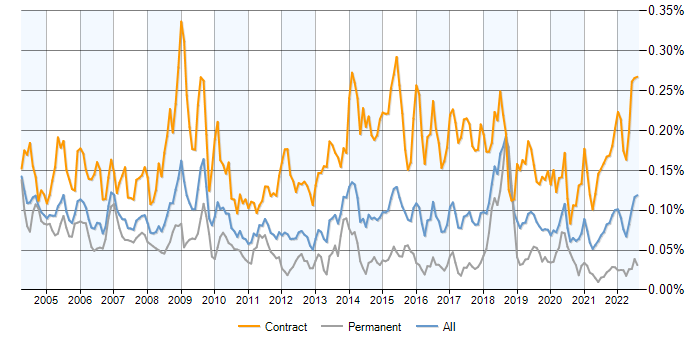 Figure 1: Contracts of contact manager, contact rates and set skills (Source: Müller et al., 2019)
Figure 1: Contracts of contact manager, contact rates and set skills (Source: Müller et al., 2019)
Exploring opportunities is associated with encouraging innovation and change to cover the existing market through enhancing business capability with creativity. As researched by Piroozfar et al., (2019), the risk analysis procedure is concerned with managing transduction with both suppliers and customers. Visibility of the entire business contract depends on the contribution of both parties such as supplier and customers to increase revenue, assigning tasks properly and cost deduction process for adhering to projects and adjusting pricing.
As studied by Casady and Baxter (2020), transition for implementation includes promoting awareness, Internalising goals of stakeholders, and Enhancing visibility. Realising of work actively helps to manage contractual obligation that accomplice overview presentation, supports and training process. As understood by Tezel et al., (2020), awareness training is associated with identifying scopes, and deliverables concerning confidentiality and protection requirements.
Contract manager predicts updates and dresses proper plans for managing change and reinforcing the implementation process avoiding contract compliance. As overviewed by Al Amri and Marey-Perez (2020), visibility of a contract plays a notable role in accomplishing contract documents physically and electronically that helps top pulling out information, participation and reference by contract manager in management review and project meetings.
Contract managers take initiative to manage compliance concerns and problems of interpretation by enhancing the visibility of a project management process. As stated by Cardoso et al., (2022), stakeholder involvement is required to identify objectives of contract management in commercial and contractual that provides ion formation to modify the whole process. Aligning objectives and goals of contract managers with business strategy in negotiation helps to measure value and draft contracts. As perspective by Tezel et al., (2018),
Monitoring techniques and tools are associated with improving performance through conducting acceptance like a review of working documents, measuring attributes and audit obligations with deliverables for setting contracts. Requesting assurance by the contract manager from other parties helps to ensure s safeguard for the future. As argued by Walker and Lloyd-Walker (2018), curing non-performance factors through understanding every factor helps to mitigate suspicious risks in future tasks and deliver a high-performance rate for a success of a contract management process.
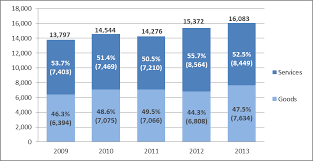 Figure 2: Contact administration and management (Source: Clarkson et al., 2022)
Figure 2: Contact administration and management (Source: Clarkson et al., 2022)
The essential factors of the contract management process are to lend confidence to opponent parties and partners through man managing the transduction structure and ensuring security by encouraging optimisation efficiency in a contract management process. As explained by Clarkson et al., (2022), minimisation of transaction costs and introduction of an autonomous contract management process is a significant way to improve business methods and enhance optimisation efficiency in a contract management process.
As explained by Mishchenko et al., (2018), changing initial agreements is common in contractual and commercial project management process that is associated with changing written amendments, and includes additional order of work. As described by Palcic et al., (2022), managing a relationship involves maintaining understanding between boat parties regarding agreements of contractual and commercial project management process concerning terms and conditions.
Contract manager enables to capture language and assumptions in a contract management process considering requirements that contribute to making decisions. As viewed by Williams et al., (2019), a contract manager plays a role in ensuring terms and conditions in the project management process that includes reporting activities and reports considering involvements of parties with a specification of tasks. Contract manager is responsible to construct procedures based on an understanding of requirements and reporting activity in commercial and contractual project management processes.
Contract management activities
Contract manager plays a role of an administrator in a project management process. However, management activity in bureaucratic contracts enables identifying proactive issues through distinguishing expectation and reality. As stated by Clarkson et al., (2022), Primary sources of contact management activities are recognised as an administrative term that typically includes testing service and acceptance.
As described by Papadonikolaki et al., (2019), measurements of service level and payments system are administrated by a contract manager. Human resources management is a significant activity of contract managers to maintain the availability of labour to manage workflow. As per the perspective of Palcic et al., (2022), a proper understanding of legal factors and policies is required to justify enforceable factors in contractual project management procedures that enable to earn approval with facilitated security.
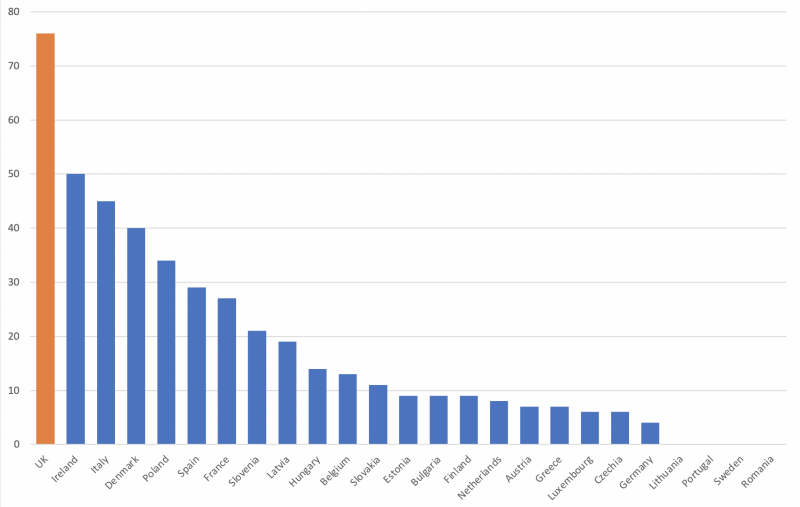 Figure 3: Public Procurements in terms of contact in different countries at the time of COVID (Source: Williams et al., 2019)
Figure 3: Public Procurements in terms of contact in different countries at the time of COVID (Source: Williams et al., 2019)
Contract manager is responsible for managing financial factors and costs through administrating resources and other needs in project management process that involves internal and external procurement management process with a specific address of the contact. As argued by Williams et al., (2019), contractual management activity is associated with providing standard procedures of operation to both parties considering function and best practices for aligning signified goals and objectives.
As articled by Cummins and Clack (2022), arising conflict is a major factor in contractual project management activities and strengthening administrative activity is required for mitigating possibility of conflicts. As observed by Papadonikolaki et al., (2019), conflict management process is signified as a part of contract management activity that involves managing accountability in project management process with systematic working culture and employee engagement in project management process.
As stated by Bao et al., (2018), a contract manager is responsible for managing human resources for reducing possibility of conflict through creating a collaborative and supportive working culture with well skilled and proficient workforce. As researched by Farrell and Sunindijo (2022), external activity is associated with managing problems and policies of regulatory agencies such as financial data, extra-contractual responsibilities, and circumstances management. Seniority and nature of contracts makes issues in administrative process of contract manager.
As understood by Cummins and Clack (2022), issues related to job allocation and communicating with several responsibilities seniorities make a problematic situation that impacts organisational culture. Understanding of roles and responsibilities of specific employees is required to mitigate seniority-related issues in organisational culture and maintain proper discipline in project management process.
As overviewed by Dakhli et al., (2019), maintaining proper discipline in project management process with the consideration of post and authority by each member can deliver an efficient workforce by reducing possibility of conflict in the project management process. As perspective of Papadonikolaki (2018), service level measurements are associated with agreements between contract manager and clients or sponsors that crucial part of project management process.
As argued by Johnson and Babu (2020), Service level measurements are concerned to earn approval in a project plan considering achievable objectives of commercial and contractual project management process.
Contract management resource planning
Primary focus of contract management is to improve quality and reduce risk in a mechanical process. As context by Nolden et al., (2020), contract management oversees phases through completions and ensures the project budget which helps to align a project. Contract management helps in the smooth running of transactions and helps to maintain good relationships with suppliers.
As articled by Müller et al., (2019), resource planning helps to ensure product services and enables strong communication skills. This requires proper planning to improve an applied area of a contractual management process to maintain proper trading with suppliers and customers. “Scope management planning” is associated with learning about the SOW of a project plan that is performed as a way of allocating responsibilities among parties and gathering details.
According to Denicol et al., (2020), a contract manager enables to identify significant activities in the project management process by considering scopes that manage deliverables in every step.
Work breakdown structure prepared by construct manager helps to contractual and commercial project management activities considering measurements of contract management, documentation, risk monitoring, investigation of audit and results. As cited by Piroozfar et al., (2019), a contract manager plays an effective role in “Cost management planning” that includes estimating costs regarding activity and managing every transaction process by reducing costs and additional expenditures.
Analysis of cost regarding activity in project management process refers to estimating duration, and labour cost with cost of procured material. As opined by Casady and Baxter (2020), a customer is concerned with benchmarking total cost against contract value to determine cost-effectiveness with an understanding of reasonable costs in a contractual and commercial project management process.
As context by Whyte (2019), contract managers emphasise a time management plan that includes a calculator of the required time to perform every activity of this project management process. As observed by Tezel et al., (2020), a time management plan is associated with sequencing every attribute of a project management process in the case of contractual and commercial project management processes that are recognised as resource planning.
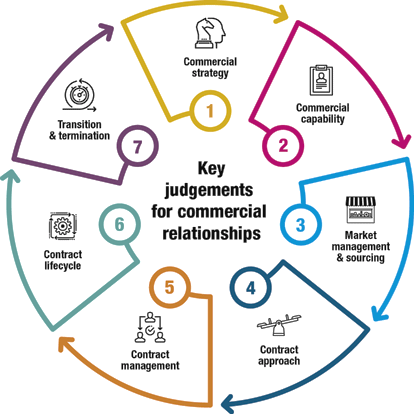 Figure 4: Information of contact (Source: Piroozfar et al., 2019)
Figure 4: Information of contact (Source: Piroozfar et al., 2019)
A time management plan is based on the segmentation of departments by assigning tasks, locating the availability of resources, and the functionality of this project management process. As researched by Al Amri and Marey-Perez (2020), contract managers flagged high-performance rates by measuring performance regarding time and adequate resources in a project management method. Planning for quality management constructed by construct manager involves measuring performance and effectiveness of project management activity with an investigation of policies and compliance.
As studied by Cardoso et al., (2022), a quality management process in a contractual project management plan is concerned with conducting reviews and measuring progress reports considering risk assessments that help to mitigate the possibility of risks in this project management process with preparedness.
Contract managers develop a charter of contractual management processes considering management structure and work authority. As understood by Tezel et al., (2018), a contract manager is concerned with documented government policies with proper specification of memorandum writings for providing a proper understanding of an operating procedure of commercial project management process.
Contract manager takes additional action to establish authority and manage stakeholders’ goals and involvements for the betterment of project outcome. As overviewed by Walker and Lloyd-Walker (2018), a charter is associated with statements of objectives and goals of a project management process that are based on interpretation and brief documentation of project management. As overviewed by Papadonikolaki (2018), contract manager conducts kick-off meetings and other communication plan meetings for evaluating proper process of project management to influence the integration process of commercial and contractual project management plans.
As researched by Bao et al., (2018), a contract manager involves in human resources management process to maintain workflow in a contractual and commercial project management process. According to Dakhli et al., (2019), human resource management process is associated with hiring employees and providing them proper training and support for ensuring potential workforce for ensuring quality of work. Human resource management is concerned with achieving approval through creating reputation and deliverable projects for managing relations between parties.
Communication
It is analysed that implementation of contact is endangered through poor communication. There are sometimes shareholders that do not receive any copy of contracts. These are sometimes mailed with a belief that until the copy is received by all, the contact is going to be properly implemented. The managers that are experienced are well aware of the fact that shortcut processes in communication can provide a high risk.
Thus, in order to avoid such confusion, there is a need to analyse and undertake constructive and effective exercises on communication. As cited by Johnson and Babu (2020), this communication is analysed as understanding the recipient’s needs by sending simple and targeted messages. This says that it needs to be understood the things that are to be done, with the reasons and values that it brings.
The way of communication is to be such that the terms are readily understood so that it is easy for recipients. This is the responsibility of the contract manager to prepare it in such a large that it is easily understood by receipts. It is necessary to analyse that these contacts can be implemented in multiple cultures. As studied by Whyte (2019), there are many people that do not receive information that is not operated in their native language according to the contract. There is to be assured that the things that are to be communicated and expressed in ways of understanding.
The contact manager at the time of making contact is to highlight high-priority points and areas that are risky. There are many people that will not agree with factors expressed in contracts. So, the contact manager has to possess such a charter that provides strategies in making them understand the reason for implementation. It is said that there is a need for time and trouble to analyse and provide the right incentives that inform the facts that are incorporated.
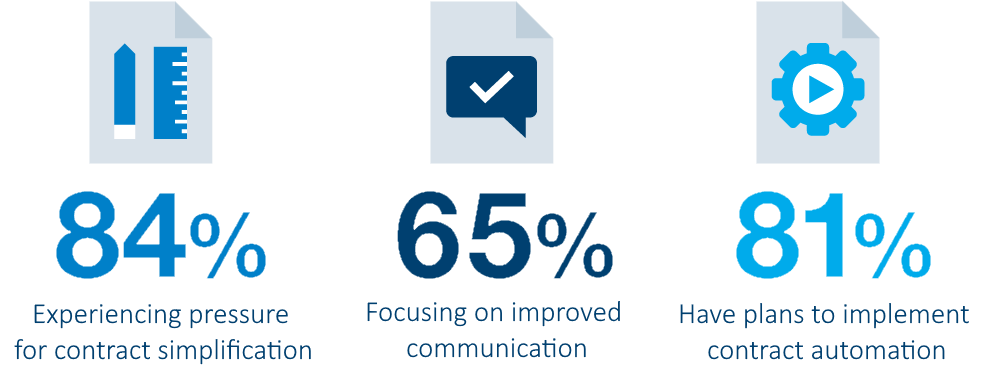 Figure 1: Contact and commerce management (Source: Whyte, 2019)
Figure 1: Contact and commerce management (Source: Whyte, 2019)
There are various issues if the plans are not properly communicated. This can lead to poor structure. There will be unclear roles in reporting lines, thus, there is a need to define authorities and responsibilities. There is a need to maintain a comprehensive record of decisions and communication. As opined by Mishchenko et al., (2018), a structured and complete contact and project file are to be maintained.
Thus, the main issue in this project is to provide an unclear communication. There is a need for the development and design of standard filing systems for project documents that are diligently filed. The files are to be accessible to all the team members. Effective control of communication and interface control is a simple and effective way of managing and controlling a project.
In a contact relationship, there are many people that provide informal promises; however, this may be dangerous. As stated by Bao et al., (2018), the contact manager is needed to record all communications and deals. The project founders in disputes involve directions that are misunderstood, misapplied and misrepresented.
There are many mistakes done by believing in others as they analyse that they work in the same firms. The activities that are shared with other groups in the same firm are also to be documented. If there is no documentation of any contact then this can lead to allegations.
The tendering process in the UK is concerned with communicating an interested and potential tender participant through formal invitation. This formal and official invitation letter includes necessary information and criteria regarding the procurement and acquisition of a project or goods. In addition to that, a participant can be invited through oral communication, official notice publication, electronic communication and formal tender letter.
Oral communication is a widely used communication process in the procurement of a tender and necessary documents will be filed to confirm a tender procurement. A communication process in tendering process needs to be transparent and fair to be ethically correct and to ensure authenticity of a tendering process.
Conclusion
This study concluded that managing commercial and contractual business issues need to be concerned with ethical considerations and corporate laws of a specific country regarding tendering tools and techniques. In addition to that, a project manager is responsible for identifying issues regarding a commercial tendering process and resolving issues before making procurement decisions for a project.
This study identifies different modes of tender communication and concluded that communication needs to be responsible for effectively sharing or informing tender participants regarding details of goods or services. An RFP or request for proposal includes tender data, project description, contract guidelines and contract criteria to give complete information to tender participants.
RFP data need to be authentic and accurate to ensure the authenticity of a tendering process and it needs to avoid misuse of unclear information. In addition to that, tendering communication which includes the invitation of tender participants, sharing of tender information, procurement and confirmation of tender closure needs to be fair and transparent.
This is important because it increases the authenticity of tendering and helps in meeting an ethical consideration of a business. Contact management needs to follow contract guidelines of the UK and need to avoid discrimination or corruption in the tendering process.
Reference
Journal
Cardoso, C.A., Torriti, J. and Lorincz, M., 2020. Making demand side response happen: A review of barriers in commercial and public organisations. Energy Research & Social Science, 64, p.101443.
Casady, C.B. and Baxter, D., 2020. Pandemics, public-private partnerships (PPPs), and force majeure| COVID-19 expectations and implications. Construction Management and Economics, 38(12), pp.1077-1085.
Clarkson, B.G., Culvin, A., Pope, S. and Parry, K.D., 2022. Covid-19: Reflections on threat and uncertainty for the future of elite women’s football in England. Managing Sport and Leisure, 27(1-2), pp.50-61.
Cummins, J. and Clack, C.D., 2022. Transforming commercial contracts through computable contracting. Journal of Strategic Contracting and Negotiation, 6(1), pp.3-25.
Dakhli, Z., Lafhaj, Z. and Mossman, A., 2019. The potential of blockchain in building construction. Buildings, 9(4), p.77.
Denicol, J., Davies, A. and Krystallis, I., 2020. What are the causes and cures of poor megaproject performance? A systematic literature review and research agenda. Project Management Journal, 51(3), pp.328-345.
Farrell, A. and Sunindijo, R.Y., 2022. Overcoming challenges of early contractor involvement in local government projects. International Journal of Construction Management, 22(10), pp.1902-1909.
Johnson, R.M. and Babu, R.I.I., 2020. Time and cost overruns in the UAE construction industry: a critical analysis. International Journal of Construction Management, 20(5), pp.402-411.
Mishchenko, V., Naumenkova, S., Ivanov, V. and Tishchenko, I., 2018. Special aspects of using hybrid financial tools for project risk management in Ukraine. Investment Management and Financial Innovations, (15, Iss. 2), pp.257-266.
Müller, R., Drouin, N. and Sankaran, S., 2019. Modeling organizational project management. Project Management Journal, 50(4), pp.499-513.
Nolden, C., Barnes, J. and Nicholls, J., 2020. Community energy business model evolution: A review of solar photovoltaic developments in England. Renewable and Sustainable Energy Reviews, 122, p.109722.
Palcic, D., Reeves, E., Flannery, D. and Geddes, R.R., 2022. Public-private partnership tendering periods: an international comparative analysis. Journal of Economic Policy Reform, 25(2), pp.156-172.
Papadonikolaki, E., 2018. Loosely coupled systems of innovation: Aligning BIM adoption with implementation in Dutch construction. Journal of management in engineering, 34(6).
Papadonikolaki, E., van Oel, C. and Kagioglou, M., 2019. Organising and Managing boundaries: A structurational view of collaboration with Building Information Modelling (BIM). International Journal of Project Management, 37(3), pp.378-394.
Piroozfar, P., Farr, E.R., Zadeh, A.H., Inacio, S.T., Kilgallon, S. and Jin, R., 2019. Facilitating building information modelling (BIM) using integrated project delivery (IPD): A UK perspective. Journal of Building Engineering, 26, p.100907.
Tezel, A., Koskela, L. and Aziz, Z., 2018. Current condition and future directions for lean construction in highways projects: A small and medium-sized enterprises (SMEs) perspective. International Journal of project management, 36(2), pp.267-286.
Tezel, A., Papadonikolaki, E., Yitmen, I. and Hilletofth, P., 2020. Preparing construction supply chains for blockchain technology: An investigation of its potential and future directions. Frontiers of Engineering Management, 7(4), pp.547-563.
Walker, D. and Lloyd-Walker, B., 2018. The future of the management of projects in the 2030s. International Journal of Managing Projects in Business.
Whyte, J., 2019. How digital information transforms project delivery models. Project management journal, 50(2), pp.177-194.
Williams, T., Vo, H., Samset, K. and Edkins, A., 2019. The front-end of projects: a systematic literature review and structuring. Production Planning & Control, 30(14), pp.1137-1169.
Know more about UniqueSubmission’s other writing services:

